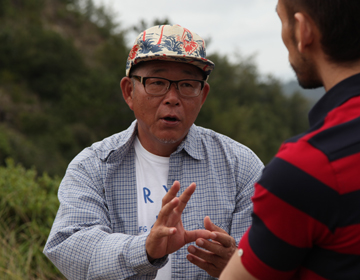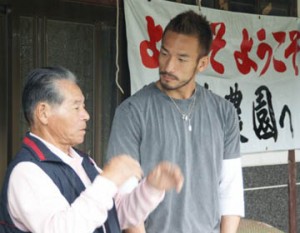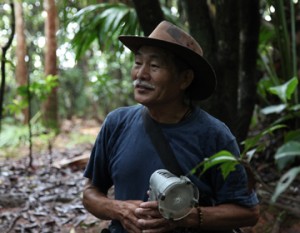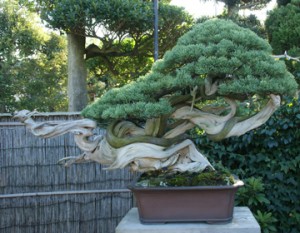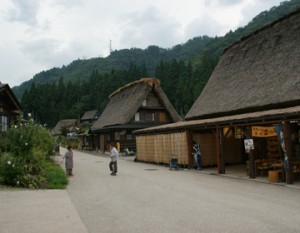Walking Around the Ogasawara Nature Preservation Area
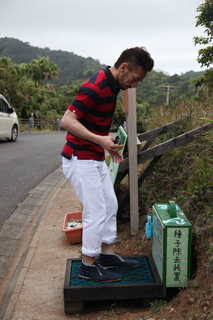
Special ward of Tokyo, consisting of 30 odd islands, located South south-east 1000 km off shore in the Pacific, and designated World Heritage in 2011. As a natural heritage, it is the fourth to be listed after Yakushima, Shirakami mountains, and Shiretoko.
Anijima is an uninhabited island, and has been so during its entire history. Ogasawara Nature Observation Instructor Liaison Officer Noritsugu Miyakawa explains, “This is the most important island of all.” We visited a dry, low wood forest just like the flora in Anijima.
We see shrubs of pandanus plants, tall enough to cover our entire bodies. Many plants are unique to Ogasawara. We shove through the thick shrubs onto a hill, where we have a 360°panoramic view. Any way we turn, we see the beautiful ocean and the greenery of the island. A breathtaking view to appreciate the beauty of mother nature. We also went on a tour at night where we stood under innumerable stars.
History of Ogasawara Islands
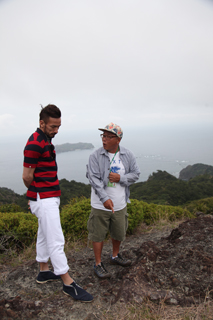
According to Miyakawa, the Ogasawara islands were first discovered approximately 400 years ago. During the Edo period, it was referred to as“Buninjima (no-man’s island) and much research was conducted at the time. Correspondence with people outside became active from the 19th century when Western whaling ships started to visit its ports.
”They were ships from Hawaii, and the first ones were British and Portuguese. We used to call the islanders of these descendants, `Western islanders`.” Later on, the United Kingdom claims the area as their territory, but Japan proclaimed the islands to be their own, and this was recognized towards the end of the Bakumatsu reign. Similar to Hokkaido, development began and at its peak, the population reached close to 10,000. In recent years, the combined population of Anijima and Hahajima is about 2500. Famous for Iojima, the islands were a battle ground during World War II, thus causing the drastic decrease of population. “During the war, a military base was built, and when we were defeated by the Americans, it became American territory. The islanders evacuated to the main land but not all returned.”
Culture that is Open to the New

“Does that mean that cultural history was lost?” Nakata asks. “Yes, unfortunately,” answers Miyakawa. “A long time ago, this was an intersection for the South Pacific, thus creating a unique culture of its own. Its influence is declining, but it has been slowly remerging in the last 20 years.”
Ogasawara is also known to be open and accepting. “New things are welcomed, but if you look at the people’s lives, you can see that traditional practices still remain. Perhaps the characteristic of Ogasawara is that they accept the new, which later thrives in its own way because it is secluded.”
Deep converstaions while walking in nature
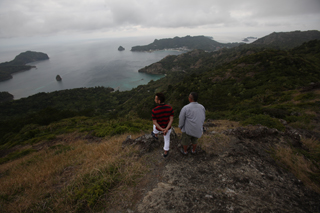
Ogasawara islands are often referred to as the Galapagos of the East.
A unique ecological system prevailed, as natural enemies did not exist. There are many species unique to the islands. Untouched nature, plants, ocean, and open skies. It is an island full of the bounties of nature.
Recently, there are many guided tours with Nature observation guides. To enter the preserved areas, visitors are asked to wipe the soles of their shoes, and clothes are cleaned so they do not import any seeds alien to the islands.
There are endless stories to be told regarding the biology, history, and lives of the people of the islands. Our visit enabled us to see the lives of the Ogasawara people, and how they have coexisted with nature.


